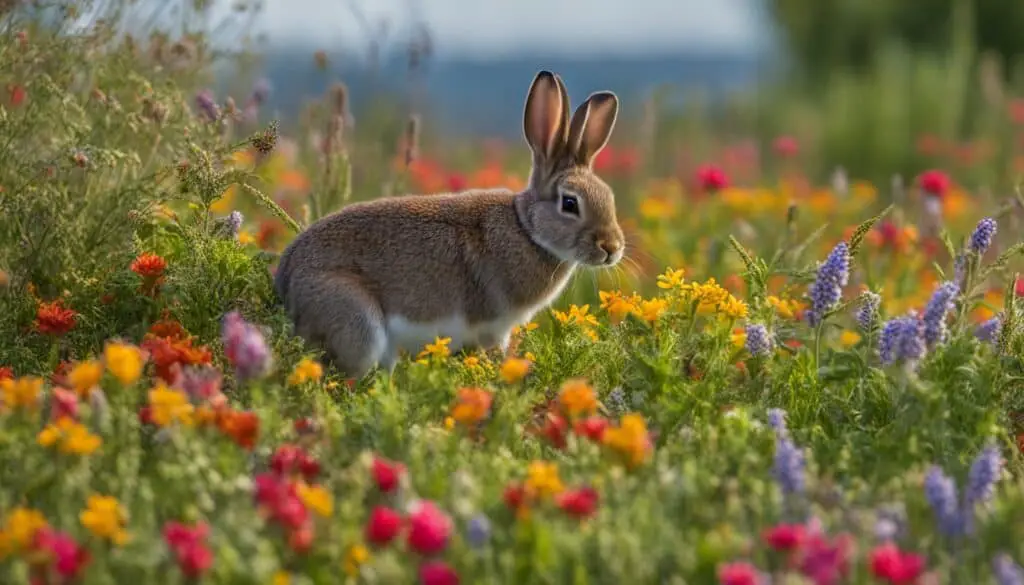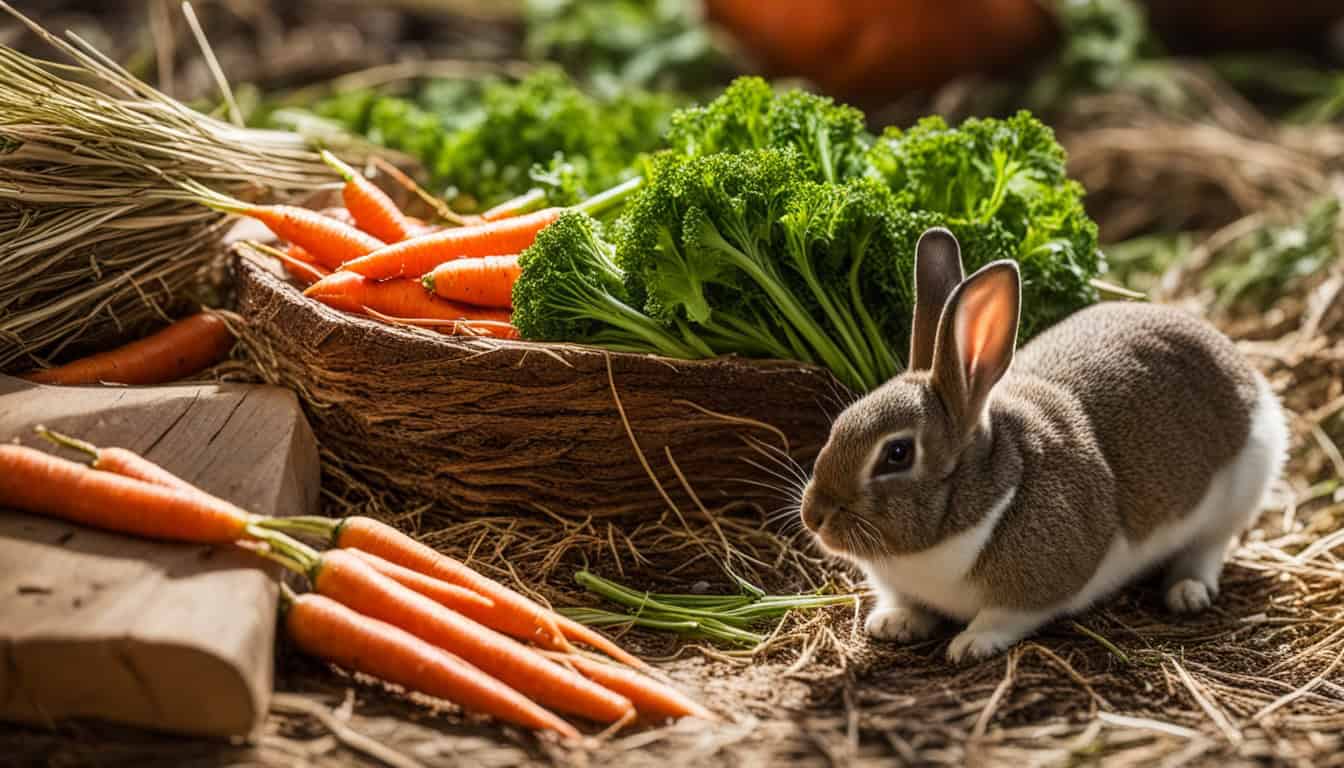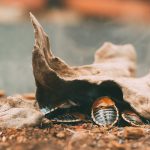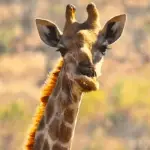Ever thought about what a cottontail rabbit eats? Their diet is quite interesting. In the wild, they can eat a lot of different plants and trees. This shows how adaptable they are to their environment.
They’re famous for finding food. This often leads to plants being eaten in gardens. So, what do cottontail rabbits eat really? Let’s take a look at their eating habits and learn why they choose certain foods.
Introduction to Cottontail Rabbits
Cottontail rabbits are famous for their fluffy white tails. They are found in North America. These rabbits are experts at living in different places. They can be seen in the countryside, suburbs, or even cities.
Who Are Cottontail Rabbits?
Cottontail rabbits like to be alone and are most active at dawn or dusk. When they feel in danger, they will run away quickly or make loud noises to scare off the threat. Knowing what they eat helps us understand their daily lives.
Where Do They Live?
These rabbits can live in many places, from open fields to cities. They are very good at living in small places. Even though they don’t live long, usually just under two years, they have the skills to survive in different environments.
Watching where cottontail rabbits make their homes teaches us a lot. We can learn how they live and what their habits are by looking at the places they choose to live.
What Do Cottontail Rabbits Eat? Understanding Their Diet
Cottontail rabbits eat many different things. What they eat changes as the seasons do. In the warm months, they love grasses, legumes, and garden veggies. This food gives them what they need to grow and live well.
When it gets cold, their food choices shift. They start to eat grains, sticks, and the buds of shrubs. This change is important for their winter survival.
Knowing what cottontail rabbits like to eat helps us understand them better. They show us they can live in many places by using the food around them. This is a key skill for their year-round survival.
- Grasses and legumes in the spring and summer
- Succulent annuals and garden vegetables
- Grains, twigs, bark, and shrub buds in the winter
This wide range of food is critical for cottontail rabbits. It helps them stay healthy and live a long life, no matter the season.
Seasonal Variations in the Diet of Cottontail Rabbits
Cottontail rabbits change what they eat each season for their health and energy. This shows how they adapt to find food and eat differently throughout the year.
Spring Diet
In the spring, cottontail rabbits eat young, tender greens and sprouts a lot. They look for new plants that give them the nutrients they need after winter. Foods like clover, dandelions, and others are on their menu.
Summer Diet
In summer, their diet grows to include more legumes and juicy plants. They take advantage of the plenty of the season, eating lots of fresh and rich greens. Various grasses and herbs are what they feast on.
Fall Diet
By fall, they start eating more tough plants and lose the soft greens. They also begin to eat the year’s fallen fruits. This mix helps them prepare for the coming cold months.
Winter Diet
Winter is tough; rabbits eat bark, twigs, and remaining greens. It’s about surviving by eating whatever they can find. This period really shows how well they cope without their usual foods.
| Season | Primary Diet | Nutritional Focus |
|---|---|---|
| Spring | Tender greens, sprouts | Nutrient replenishment post-winter |
| Summer | Legumes, succulent vegetation | Building reserves |
| Fall | Fibrous plants, fallen fruits | Transition and preparation for winter |
| Winter | Bark, twigs, lingering greens | Survival and sustenance |
Preferred Foods of Cottontail Rabbits
Cottontail rabbits love specific foods for their nutrients and how easy they are to find. Knowing what they like can show us what their favorite wild rabbit foods are. Let’s look into the main types of food they enjoy the most.
Grasses and Sedges
Grasses and sedges are key in a cottontail rabbit’s diet. They prefer Bahia grass, alfalfa, and clover. These grasses and plants are full of important nutrients. They are also common in many places and have what wild rabbits need.
Fruits and Vegetables
Cottontail rabbits enjoy eating fruits and veggies when they can get them. They like things like carrots, apples, and leafy greens. These foods are good for them, providing vitamins and water.
Bark and Twigs
When food is hard to find, cottontail rabbits eat bark and twigs. This change in diet helps them survive the winter. It’s a sign that they can adapt to tough times by eating foods they might not normally eat.
How Cottontail Rabbits Forage
Cottontail rabbits have interesting foraging habits. They show both flexibility and the need to defend their space. Knowing this helps us understand how they live and survive in their habitat.
Foraging Behavior
Rabbits like to forage when the sun is going down or coming up. This helps them stay safe from predators while looking for tasty food. They look for places with lots of soft greens, clover, and nutritious plants.
Territorial Patterns
Even though cottontails are usually on their own, they have their own places they like to keep. These areas include spots for finding food, building nests, and staying safe. They stick to certain paths and locations to avoid fights and make sure they have enough to eat.
Natural Diet of Cottontail Rabbits in the Wild
Wild cottontail rabbits have a diverse diet that changes with the seasons. In warm months, they eat fresh grasses, clover, and fruits. This helps them use the many plants around them for food.
When it gets colder, their food choices also change. Now they eat buds, twigs, and tree bark. They even munch on left-over garden veggies. This shows how they can find food in different ways, any time of the year.

This diet change is a key part of their survival. Eating many different plants helps them get all the nutrients they need. It also shows their smart way of finding food as the seasons change.
| Season | Typical Food Sources |
|---|---|
| Spring & Summer | Grasses, Clover, Fruits, Vegetables |
| Fall & Winter | Buds, Twigs, Bark, Garden Vegetables |
Learning about their diets teaches us a lot. It shows how they can live in different places by finding food in clever ways. Knowing what they eat helps us understand how they survive in the wild.
Human Impact on the Cottontail Rabbit Diet
Human activities and building in cities have changed what cottontail rabbits eat. We’ll look at the results of these changes. Also, how these smart animals cope with city life to find food.
Garden and Crop Damage
Cottontail rabbits are a big issue for gardeners and farmers. They love eating the soft plants and veggies in gardens. This means plants in gardens and fields often get eaten. Gardeners are not happy when they find their crops damaged. It leads them to protect their plants.
Urban Environment Adaptations
In cities, rabbits have learned to eat what is around them. This can be plants in parks or yards. They also munch on ornamental plants and food leftovers from people. Despite this, they find ways to live among us. They use every chance to find food.
| Human Activity | Impact on Diet | Result |
|---|---|---|
| Garden Cultivation | Increased access to tender plants and vegetables | Cottontail rabbit garden damage |
| Urban Park Development | Availability of ornamental plants and natural greens | Diversified diet utilizing urban flora |
| Residential Lawn Care | Easy access to grass and clover | Greater foraging opportunities |
The Importance of a Balanced Diet for Cottontail Rabbits
A balanced diet is crucial for cottontail rabbits to stay healthy. They eat a mix of plants like grasses, legumes, and fruits. This mix gives them all the nutrients they need for growth and development. It ensures their ability to survive in different areas.
Foraging is essential for cottontail rabbits’ diet balance. They adjust what they eat based on the season. In warmer times, they focus on juicy plants like clover. When it’s cold, they eat more fibrous plants and bark. This shows how they adapt to find the right nutrients all year long.
It’s clear that a varied diet is key to the rabbits’ health. Their natural food choices meet their energy and other body needs. It’s also important to keep a variety of plants available for them to eat. This ensures a strong, healthy rabbit population.
FAQ
What is the diet of a cottontail rabbit?
A cottontail rabbit’s diet includes grasses, twigs, and plants from gardens. They also eat clover and dandelions. Tree bark becomes part of their diet in the winter.
Who are cottontail rabbits?
Cottontail rabbits are known for their fluffy white tails. They live in North America and are most active at night. They are able to find food easily.
Where do they live?
These rabbits live in a variety of places including farmlands and cities. They can adapt to different areas and usually live in a small space.
What do cottontail rabbits eat?
Cottontail rabbits eat grass, leaves, and fruits. Their diet changes with the seasons to get the nutrients they need.
What do cottontail rabbits eat in the spring?
In the spring, they eat a lot of greens and sprouts. This is because there’s plenty of fresh food available.
What do cottontail rabbits eat in the summer?
During summer, they add legumes and juicy plants to their diet. These foods help them stay healthy.
What do cottontail rabbits eat in the fall?
In fall, they eat more plants that are hard to digest. This prepares them for the coming winter months.
What do cottontail rabbits eat in the winter?
Winter foods for cottontails are bark and twigs, sometimes green plants. This diet helps them survive when food is scarce.
What grasses and sedges do cottontail rabbits prefer?
Cottontail rabbits like Bahia grass and different sedges. They also enjoy alfalfa and clover for their nutrients.
Do cottontail rabbits eat fruits and vegetables?
Yes, they eat a variety of fruits and veggies, especially from gardens.
Do cottontail rabbits eat bark and twigs?
When food is hard to find, like in winter, they eat bark and twigs.
What are the foraging behaviors of cottontail rabbits?
They search for places with lots of their favorite food. Their active times are early morning and evening.
Do cottontail rabbits have territorial patterns?
Indeed, they mark areas for eating and living. They’ll protect these spots from other rabbits.
What does the natural diet of cottontail rabbits in the wild consist of?
In the wild, they eat what they can find, like grass and clover. When it’s cold, they turn to buds and tree bark.
How does human activity impact the diet of cottontail rabbits?
Human actions can change what these rabbits eat. They might eat garden plants. In cities, they look for food in parks and yards.
Why is a balanced diet important for cottontail rabbits?
A mix of plants keeps these rabbits healthy. It helps them get all the nutrients they need, especially when the food around them changes.







